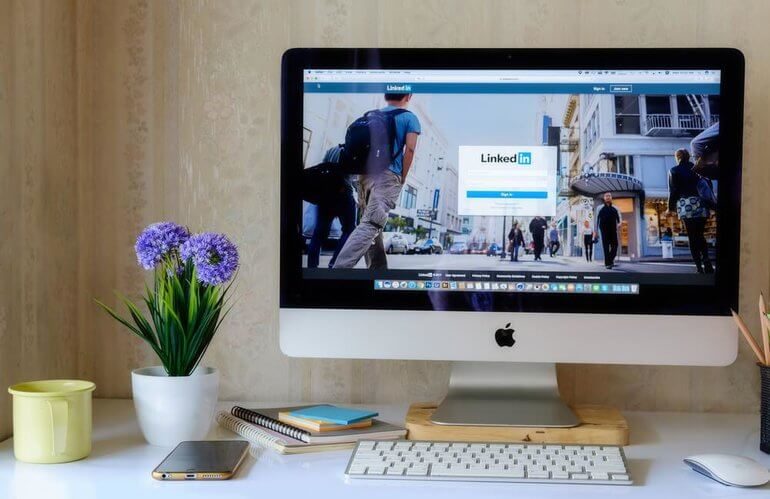Good careers don’t just happen. Successful people invest time in building a professional network and expanding their skills. With so much business conducted online, you need to create a LinkedIn profile. If you’re searching for a job, then you also need a stellar resume. The similarity of the profile and resume raises the question should LinkedIn profile and resume be the same?
The short answer is no.
Although both contain largely the same information, their style, tone, and purpose are not identical. In fact, if your LinkedIn profile was a word-for-word version of your resume, then you would come across as lazy to hiring mangers and clients.
When your resume arouses interest in someone, that person might decide to look at your LinkedIn profile. You want the person to gain new insights about you beyond what the resume can offer.
Of course, the information on your resume should factually match the work experience on your profile. However, there could be differences. You might only include the experience most relevant to the job application on a resume. Your profile could display job histories that you chose not to place on a resume.
Check out Great Linkedin Profile Examples
LinkedIn Profile and Resume Differences

1. Language
The sections of a LinkedIn profile mirror those that appear on most resume formats. Although your profile functions loosely as an online resume, you don’t want to write it like a resume.
Profile language:
- Conversational
- More space to tell your story
- First person point of view
Resume language:
- Formal
- Limited space to tell your story
On top of differences in language style, the profile has much more visual appeal. Ideally, you’ll design a profile that has some headers, bullet lists, images, and even videos. A resume has few visual elements beyond headings and maybe bullet lists. Resumes should not include your photo. Your profile, however, really needs one.
People view LinkedIn profiles with photos 21 times more than profiles without them according to LinkedIn.For example, a resume could mention that you received a professional award. A single sentence could communicate this information. By comparison, your profile could show a picture of you receiving the award at a banquet. You could include text that describes the hard work that earned you the award.
Check out How to Endorse People’s Skills on LinkedIn
Your profile offers an opportunity to tell the stories behind your successes. Unlike a resume that would describe an accomplishment with one or two strong sentences, your profile could include greater detail.
2. Keyword Strategies
You’ve likely heard that many employers screen resumes for keywords with software. For this reason, you need to place exact terms and phrases from the job announcement in your resume.
As a result, every version of your resume has a narrow keyword focus.
The content of your profile will employ a somewhat broader strategy. Its keyword focus should aim to build appropriate network connections and entice job recruiters. To accomplish this, use keywords and phrases associated with your career. You could even include words related to the career that you want.
According to Forbes, 94% of recruiters hunt for talent on LinkedIn. The right keywords could attract new connections who introduce you to new career opportunities.
3. Personal Branding
Just as your profile keywords could lead to new connections, all of your LinkedIn activity can promote your personal brand. You want to produce and share content that promotes you as a talented person with a good reputation.
Branding on LinkedIn involves:
- Using a high-quality photo of you dressed in attire appropriate for your profession
- Crafting a headline that goes beyond a simple job title
- Writing comments on other users’ posts that add value to the discussion
- Contributing to groups relevant to your career
- Publishing articles on LinkedIn that showcase your expertise
- Integrating SlideShare presentations that you created
- Sharing content useful to your network
- Adding your Featured Skills
- Asking for Endorsements
Don’t neglect to include Featured Skills. A LinkedIn Study concluded that people who showcased at least 5 skills had 17 times more profile views than other users. Other users also contacted people in this group 31 times more often.
Pro Tip: You can position your strongest skills at the top of your Featured Skills list. To rearrange your skills, find the Featured Skills & Endorsements section on your profile. Click on the skills to enable moving them up or down on the list.Your personal branding activities on LinkedIn simply don’t translate effectively to a resume. Your profile really shows it. Visitors to your profile will see your active and ongoing efforts to excel as a professional.
On LinkedIn, you’ll get an opportunity to emerge as a thought leader and attract followers. A resume cannot show a recruiter how people are interacting with your services or content on a daily basis.
Each resume that you produce is a static document sent to outside parties. Your LinkedIn profile, by contrast, evolves over time. Now that you know the answer to should LinkedIn profile be same as resume, you can focus on strategic updates to your profile.
Read Our Guide: Difference Between LinkedIn and Resume









